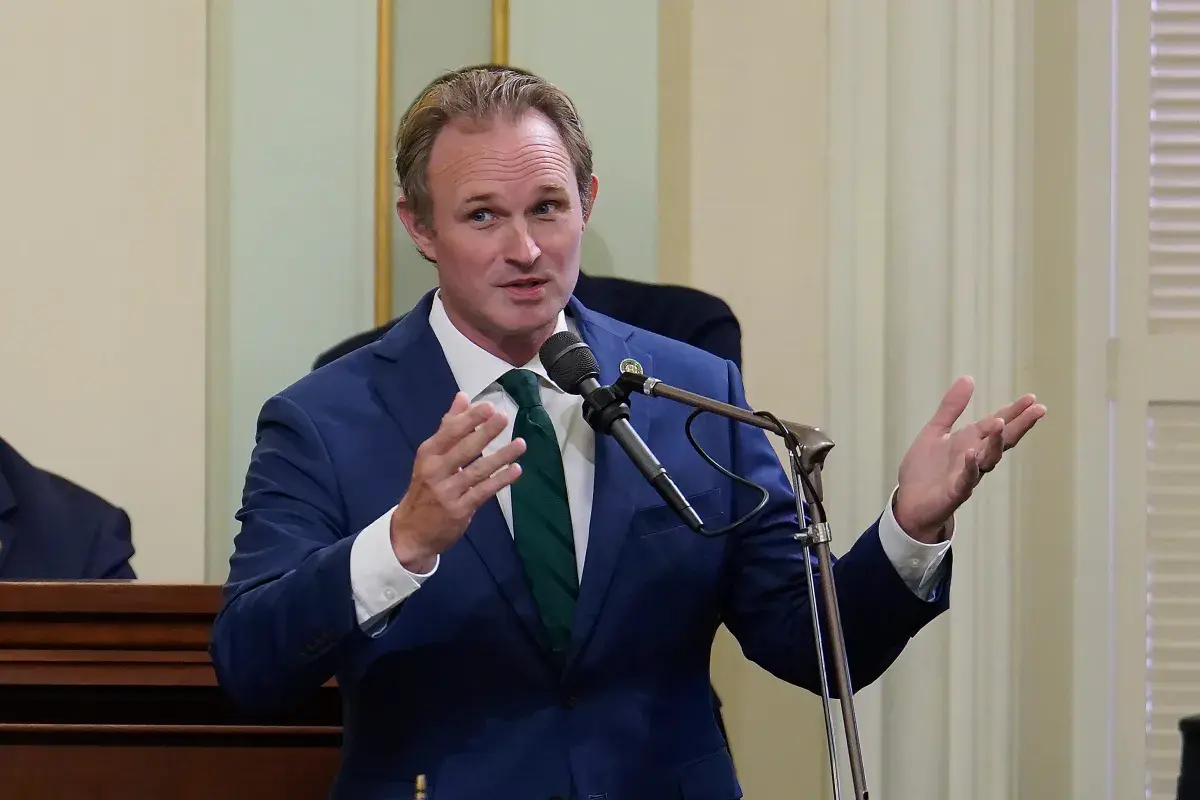Copyright Newsweek

A California official has renewed plans to split the state in two after a proposal to redraw California’s congressional districts, Proposition 50, passed on Tuesday. Speaking to the Shasta County board of supervisors during a public meeting on Thursday, state Assemblyman James Gallagher, a Republican, said he intended to reintroduce a resolution that would form a new state out of several Californian counties. Newsweek contacted Gallagher by phone for comment outside normal business hours. Why It Matters Earlier this year, California overtook Japan to become the fourth-largest economy in the world by gross domestic product. The state, which has the most electoral votes in the country at 54, has voted Democratic in every presidential election since 1992. So splitting the Golden State and creating a 51st state would have significant economic and political effects. While there have been numerous separatist movements in different states, including Texas, only three states—Kentucky, Maine and West Virginia—have been created through the partitioning of existing states. The last separation, West Virginia from Virginia, occurred in 1863. What To Know Gallagher, who first announced his plan in late August, said he would split the state from the northernmost part of California to the Mexico border. He said the new state would be made up of 36 counties. The state assemblyman argued that coastal cities take tax dollars away from inland California, meaning issues faced inland are not prioritized. “Let’s not discount ourselves in what this Inland California is actually really capable of,” Gallagher said. “I think we can do it a lot better than the [government] that is currently controlled by the coastal representatives.” On November 4, California voters passed Proposition 50, an amendment put forth by Democratic Governor Gavin Newsom that would temporarily revise the state’s congressional map, a move expected to boost Democrats in future elections. The redistricting targets five Republican representatives and would create more Democratic seats in California, thus neutralizing a Republican-favoring redistricting plan in Texas. The redistricting could help Democrats in next year’s midterm elections. If Gallagher’s plan is to go ahead, it will need to be approved by the state legislature, which is controlled by Democrats, and then the U.S. Congress. So it is unlikely to move forward. Speaking with Newsweek, Heath Brown, an associate professor of public policy at City University of New York, said: “Many times in the past, legislators and activists have attempted to split the state of California into multiple states. Those attempts have all failed, suggesting dire prospects for the most recent attempt.” What People Are Saying California Governor Gavin Newsom said on November 4: “We stood firm in response to Donald Trump’s recklessness, and tonight, after poking the bear, this bear roared with unprecedented turnout in a special election with an extraordinary result.” He added: “What a night for the Democratic Party. A party that is in its ascendancy. A party that is on its toes, no longer on its heels. From coast to coast, sea to shining sea. But it was not just a victory tonight for the Democratic Party, it was a victory for the United States of America, for the people of this country, and the principles our Founding Fathers lived and died for.” Representative Kevin Kiley, a Republican from California, said in a video message on X: “I believe fighting fire with fire burns everything down. With California’s new gerrymander, the redistricting arms race has no end in sight. ... “It’s a race to the bottom. It degrades democracy everywhere. It’s both a symptom of our country’s political divisions and a troubling new trend that is sure to make that division even worse. Tonight, more than ever, I believe excessive partisanship is one of the biggest challenges facing our country.” State Assemblyman James Gallagher said in an August release: “Whether you are from the North State, Central Valley, or the Inland Empire, life has become harder and completely unaffordable. We have been overlooked for far too long, and now they are trying to rip away what little representation we have left.” What Happens Next Districts are set to be redrawn ahead of the November 2026 midterms and are expected to last through the 2026, 2028 and 2030 election cycles.



